Creating a successful brand partnership strategy for live music events requires thoughtful planning, meticulous attention to detail, and a clear understanding of both the event’s and the brand’s goals.
Effective partnerships don’t happen by accident; they are the result of strategic thinking, collaboration, and an effective event marketing strategy. Based on industry best practices and successful case studies, here are five crucial elements that every event organizer should include in their partnership strategy to ensure lasting success.
Understanding Event Marketing

Event marketing is a powerful tool for businesses to connect with their target audience, build brand awareness, and drive sales. It involves creating and hosting events designed to engage and educate attendees while promoting a product or service. Whether it’s a live event or a virtual event, the goal is to create a memorable experience that resonates with the audience and achieves the event’s objectives.
Key Concepts in Event Marketing:
- Event Objectives: Clearly defining the goals and objectives of the event is crucial for its success. This includes identifying the target audience, determining the event format, and establishing key performance indicators (KPIs) to measure the event’s effectiveness. For instance, are you aiming to increase brand recognition, generate leads, or drive sales? Knowing your objectives will guide your entire event marketing strategy.
- Event Targeting: Understanding the target audience is essential for creating an event that resonates with them. This includes identifying their demographics, interests, and pain points, as well as their preferred communication channels and event formats. Tailoring your event to meet the specific needs and preferences of your audience will enhance engagement and satisfaction.
- Event Format: The event format can vary widely, from in-person events such as conferences and trade shows to virtual events like webinars and online conferences. The choice of format will depend on the event objectives, target audience, and resources available. Virtual events, for example, can reach a global audience and offer flexibility, while live events provide opportunities for face-to-face interaction and networking.
- Event Promotion: Effective event promotion is critical for attracting attendees and driving engagement. This includes creating a compelling event website, leveraging social media and email marketing, and utilizing paid advertising and sponsorships. A well-rounded promotion strategy ensures that your event reaches the right people and generates buzz before, during, and after the event.
Also Read: Live Music Event Trends in 2025 That Event Organizers Should Know About
Comprehensive Event Branding and Value Proposition Development
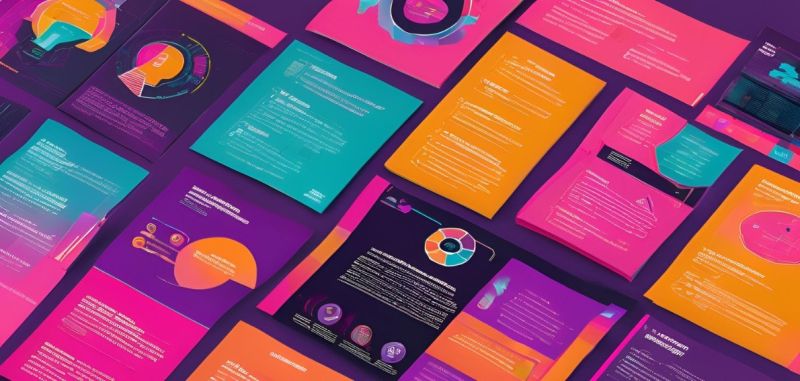
At the heart of any successful partnership strategy is a strong value proposition. Event branding is crucial as it enhances visibility and creates memorable experiences through cohesive visual identity across various platforms. Your value proposition should clearly articulate why your event is an attractive opportunity for potential brand partners and set you apart from competitors. Simply listing basic demographic data and attendance numbers is not enough. A compelling value proposition should provide a complete story about the event, outlining the unique benefits for potential partners and incorporating a well-defined event branding strategy.
Key Components to Include:
- Detailed Audience Personas: To create a truly compelling value proposition, you need to dive deep into understanding the behaviors and motivations of your audience. Audience personas should include not only basic demographic information (such as age, gender, and location) but also lifestyle preferences, spending habits, and the brands they are most likely to interact with. This data can help potential partners see how they align with your audience and whether your event is the right fit for their brand.
- Historical Data on Audience Engagement: If you have previous data from past events, highlight key metrics like social media reach, audience engagement rates, and ticket sales growth. This provides partners with insights into the effectiveness of past collaborations and the impact of your event. Demonstrating a track record of engagement makes it easier for potential sponsors to justify their investment.
- Success Metrics from Previous Partnerships: Highlight the results of past brand partnerships. For example, did a brand see a significant boost in brand awareness, sales, or customer loyalty as a result of their involvement? Showcasing specific outcomes such as increased website traffic, social media mentions, or even product sales tied directly to your event will enhance the credibility of your value proposition.
- Unique Selling Points: Every event has something that sets it apart from others. This could include unique features such as a specific genre focus, an exclusive venue, an innovative fan experience, or a notable lineup of performers. By outlining these unique aspects, you position your event as an unmissable opportunity for brands looking to stand out.
- Event Branding Elements: Ensure that all event branding elements work together to form a cohesive experience. Visual consistency across promotional materials, merchandise, and other aspects of the event is crucial. Utilize analytics to gauge audience engagement and feedback, which can inform the effectiveness of these elements.
- Tangible and Intangible Benefits for Partners: Be sure to articulate both the tangible and intangible benefits for potential brand partners. Tangible benefits might include exposure through branded content, on-site activations, or product placement. Intangible benefits could include being associated with an event that aligns with a brand’s values (such as sustainability, community engagement, or supporting emerging artists).
It’s essential to customize this value proposition for different types of partners. A large, national brand may be more interested in widespread exposure and audience reach, while a smaller, niche brand may value deeper connections with specific audience segments. Tailoring your pitch increases the likelihood of forging a mutually beneficial partnership.
Creating a Compelling Event Brand

A strong event brand is essential for creating a consistent and memorable experience for attendees. It involves developing a unique visual identity, tone of voice, and messaging that resonates with the target audience. A well-defined event brand not only attracts attendees but also fosters loyalty and engagement.
Strategies for Brand Differentiation:
- Develop a Unique Visual Identity: Creating a distinctive visual identity is crucial for standing out in a crowded events market. This includes developing a unique logo, color palette, typography, and imagery that reflects the event’s brand personality and values. A cohesive visual identity helps create a recognizable and professional image that can be used across all event marketing materials.
- Craft a Compelling Tone of Voice: The tone of voice is a critical element of the event brand, as it helps to create an emotional connection with attendees. This includes developing a tone that is consistent across all event marketing materials, from the event website to social media and email marketing. Whether your tone is formal, casual, or playful, it should align with the event’s brand and appeal to the target audience.
- Create Clear and Consistent Messaging: Clear and consistent messaging is essential for communicating the event’s value proposition and unique selling points. This includes developing a messaging framework that outlines the event’s key themes, topics, and takeaways. Consistent messaging across all channels ensures that attendees understand what to expect and why they should attend, enhancing the overall event experience.
Also Read: Customizing Your Event Page According To Your Event Theme
Tiered Partnership Structure

A flexible and tiered partnership structure, incorporating strategic partnerships, allows you to cater to a wide range of potential partners, from small local businesses to global brands. This approach not only provides clear value differentiation but also ensures that you can accommodate different levels of investment, involvement, and customization.
Key Features of a Tiered Partnership Structure:
- Scalable Activation Opportunities: Different partners will have varying levels of resources to commit. By offering scalable activation opportunities, you allow smaller brands to participate in a meaningful way without requiring the same level of investment as a major sponsor. For example, a local beer company may sponsor a single bar area, while a large corporate partner might sponsor an entire stage.
- Varying Levels of Brand Visibility: Each tier should offer different levels of brand visibility. A higher-tier partner may receive top billing on event signage, prominent logo placement, and exclusive access to key event moments, while lower-tier partners might receive smaller logo placements or limited visibility during certain parts of the event. Providing these options allows you to cater to a range of partners with varying budgets.
- Audience Access: A tiered structure also enables you to offer different levels of audience access. Higher-tier partners may have access to VIP areas, exclusive meet-and-greets with artists, or backstage passes, while lower-tier partners may receive general access or VIP entry without additional perks. This flexibility can increase the appeal of your event to a broader spectrum of potential partners, including event attendees.
- Custom Experience Creation: Customizable partnership packages allow you to work with brands to create unique experiences for event-goers. For example, a high-tier sponsor may wish to activate a branded pop-up experience or a custom event within the festival, while a mid-tier partner might want to focus on merchandise sales or activations like giveaways or sampling stations. Tailoring experiences to fit the brand’s objectives is key to building long-term relationships.
- Exclusive Category Rights: At higher tiers, exclusive category rights provide brands with the benefit of being the sole sponsor within a specific category (e.g., official beverage partner, exclusive fashion partner). This exclusivity adds extra value to a partnership, as it allows the brand to differentiate itself from competitors in a meaningful way.
Each partnership tier should include clear deliverables with measurable outcomes. From the exposure that each partner will receive to the level of fan interaction and engagement, ensure that all expectations are well-defined. While flexibility is crucial to accommodate unique partner requests, it’s essential to have baseline offerings that can be easily communicated to potential sponsors.
Crafting a Winning Sponsorship Proposal
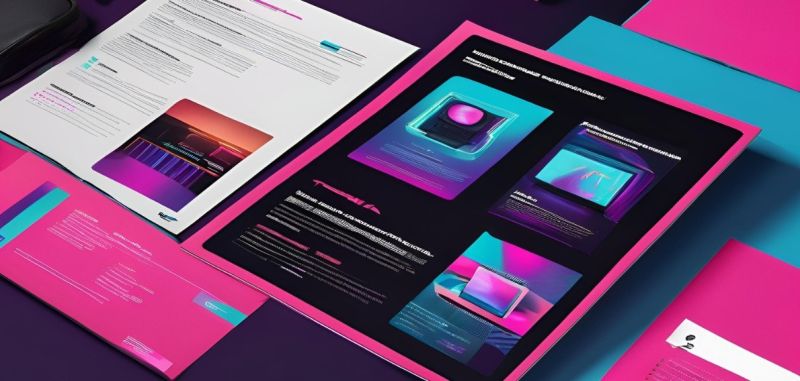
A well-crafted sponsorship proposal is essential for securing sponsorships and driving revenue for the event. It involves developing a compelling proposal that outlines the event’s value proposition, target audience, and sponsorship opportunities. A strong proposal not only attracts sponsors but also sets the stage for a successful and mutually beneficial partnership.
Essential Elements of a Sponsorship Proposal:
- Event Overview: Providing a clear and concise overview of the event, including its objectives, target audience, and format. This section should give potential sponsors a comprehensive understanding of what the event is about and what it aims to achieve.
- Sponsorship Opportunities: Outlining the various sponsorship opportunities available, including branding, speaking opportunities, and networking. Highlighting these opportunities helps sponsors see how they can benefit from being associated with the event.
- Target Audience: Providing demographic information about the target audience, including their interests, pain points, and preferred communication channels. This information helps sponsors understand the potential reach and impact of their involvement in the event.
- Event Marketing Materials: Including examples of event marketing materials, such as the event website, social media, and email marketing campaigns. Showcasing these materials demonstrates the event’s professionalism and the promotional efforts that will support the sponsors.
- Sponsorship Packages: Outlining the various sponsorship packages available, including the benefits, pricing, and terms and conditions. Clearly defined packages make it easier for sponsors to choose the level of involvement that best suits their needs and budget.
By incorporating these elements into your sponsorship proposal, you can create a compelling case for why potential sponsors should invest in your event, ultimately driving revenue and enhancing the event experience for all involved.
Also Read: How to Write the Perfect Event Press Release: 6 Easy Tips
Integrated Digital and Physical Activation Plans

In today’s world, brand partnerships must bridge the gap between physical and digital experiences. Incorporating interactive elements such as live polls, gamification, and augmented reality is crucial to enhance audience engagement and experience. For your strategy to be effective, you need to consider how your event can create seamless and integrated activation plans across both domains. This not only enhances the fan experience but also ensures that the event reaches a broader audience, whether they are attending in person or engaging remotely.
Key Components for Digital and Physical Integration:
- Pre-event Digital Marketing Campaigns: Begin building excitement for your marketing events well before they start. Utilize email marketing, social media platforms, and digital advertisements to promote the event and the brand partners involved. By working closely with your partners on pre-event marketing, you create a buzz around the event that can drive ticket sales and early engagement. Exclusive content, such as artist interviews, event teasers, or behind-the-scenes looks, can be used to build anticipation.
- On-site Experiential Activations: The physical event should be designed to amplify brand partnerships through experiential marketing. For example, brands can sponsor unique on-site activations, such as interactive booths, games, or art installations. These activations engage the audience directly and leave a lasting impression on attendees. They also provide valuable content for digital and social media sharing.
- Live Streaming Opportunities: For events with large or geographically diverse audiences, live streaming is an essential component. Offering brand partners the opportunity to sponsor or co-host live streaming broadcasts allows them to connect with a global audience. In addition to streaming the event itself, you can offer sponsors the chance to create exclusive virtual content, such as artist interviews or behind-the-scenes footage.
- Social Media Integration: Social media is an indispensable tool for event marketing. Develop a comprehensive social media strategy that integrates your event’s activities with your brand partners’ platforms. Encourage audience interaction by creating shareable content, such as behind-the-scenes videos, countdowns, or event hashtags. Social media contests and influencer collaborations can further amplify your brand partners’ presence.
Also Read: 5 Things Every Promoter Should Do As Part Of Their Organic Social Media Campaign
- Post-event Content Distribution: Post-event content is another important aspect of brand partnerships. This could include recap videos, highlight reels, or content that is specific to the brand’s activation during the event. Sharing this content across social media and digital channels ensures continued engagement long after the event ends, increasing the lifetime value of your brand partnerships.
- Virtual and Hybrid Experience Options: For partners looking to expand their reach beyond physical event attendance, consider offering virtual or hybrid event options. Virtual experiences can be enhanced with brand activations, and hybrid formats allow fans who cannot attend in person to participate in the event through branded digital experiences.
By blending physical activations with digital engagement, your event can create memorable experiences that resonate with a broader audience, creating a deeper and longer-lasting connection with both the brand and the event.
Data Collection and Analytics Framework
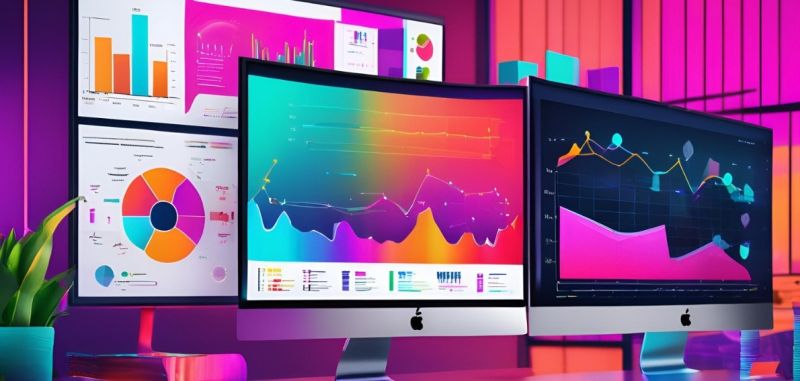
To prove the effectiveness of brand partnerships and demonstrate ROI, establishing a robust data collection and analytics framework is essential. The events industry, with its significant growth and investment potential, underscores the importance of data-driven insights to enhance event success in a competitive landscape. Data is not only critical for evaluating the success of your partnerships but also for demonstrating the value of your event to future sponsors.
Also Read: How Audience Demographics Help Event Promoters Create Effective Campaigns
Key Data Points to Track:
- Attendance and Engagement Metrics: Monitor key metrics such as the number of attendees, their demographics, and engagement levels during the event. This data can be collected through ticketing systems, mobile apps, or on-site interactions. Provide your partners with reports that detail how many people interacted with their brand during the event.
- Social Media Reach and Impressions: Track how many times your event (and your partners) were mentioned across various social media platforms. Analyze metrics such as impressions, shares, likes, and comments to quantify social media exposure. This provides partners with an understanding of the broader digital impact of their involvement.
- Brand Sentiment Analysis: Beyond raw numbers, understanding the sentiment around a brand is crucial. Incorporating event branding strategies can help refine these efforts. Use social media listening tools to monitor how people feel about the brands associated with your event. Sentiment analysis can help your partners gauge public perception and adjust their marketing strategies accordingly.
- Sales and Revenue Attribution: For many brands, the ultimate goal of a partnership is to increase sales. Whether through direct product sales on-site, online purchases, or in-store promotions, track how much revenue is generated during or after the event as a result of the partnership.
- Customer Satisfaction Scores: Partnering with brands also impacts customer satisfaction. After the event, collect feedback from attendees about their experience with brand activations, merchandise, and on-site experiences. Use surveys, mobile app feedback, or social media polls to gather insights.
- Partnership Performance Indicators: Define key performance indicators (KPIs) for each partnership, ensuring that each partner’s goals are being met. Whether it’s increased brand visibility, audience engagement, or sales conversions, tracking these KPIs is critical for measuring success.
By collecting real-time data and providing detailed reports to your partners, you can demonstrate the tangible value of their investment and establish a foundation for long-term partnerships.
Also Read: How Event Organizers Should Prioritize Learning Detailed Audience Demographics
Long-term Relationship Development Plan
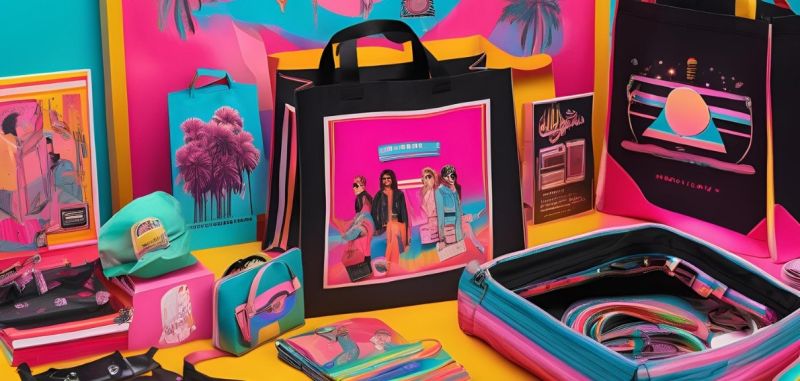
Building lasting relationships with brand partners and establishing a cohesive event’s brand is far more valuable than securing one-off deals. Long-term partnerships can lead to repeat business, more substantial investments, and deeper collaboration on future events. To create lasting relationships, you need a plan for nurturing partnerships over time.
Key Elements for Long-Term Relationship Development:
Multi-year Partnership Opportunities: Rather than focusing on one-time deals, offer partners the opportunity to commit to multi-year agreements. This stability allows both parties to plan more strategically and opens the door for larger, more ambitious collaborations, contributing to a successful event.
Regular Partnership Review Meetings: Maintain open lines of communication with your partners through regular review meetings. These meetings provide an opportunity to assess the success of the current partnership, discuss any challenges, and identify new opportunities for future collaboration.
Joint Innovation Sessions: The most successful partnerships often involve joint innovation. Work with your partners to brainstorm new ideas for experiences, activations, and collaborations. This fosters creativity and ensures that the partnership remains fresh and exciting for both parties.
Exclusive Renewal Benefits: Offer exclusive benefits for long-term partners, such as early access to sponsorship opportunities, priority placement for activations, or increased visibility in event promotions. These incentives can help foster loyalty and make partners feel valued.
Strategic Planning Workshops: Conduct workshops or planning sessions where both the event organizers and brand partners can align their objectives for future events. Collaborative goal-setting helps ensure that both parties are working toward shared goals, increasing the likelihood of continued success.
In Summary:
Building a successful live event brand partnership strategy involves much more than simply securing sponsors. It’s about crafting a comprehensive, flexible, and data-driven approach that can meet the needs of diverse brands while ensuring your event remains unique and valuable to attendees.
By focusing on comprehensive value proposition development, tiered partnership structures, integrated activation plans, robust data collection, and long-term relationship management, you can create an effective event marketing strategy that drives mutual success for your event and its partners.
Ultimately, the key to building lasting brand partnerships is understanding what each partner wants to achieve and finding creative ways to help them meet those goals while providing exceptional value to your event and audience through strategic partnerships.
You May Also Like:
6 Steps Event Organizers Need To Know To Keep The Show Running Smoothly
The Ultimate Guide to Selecting Venues for Touring Artists: A Comprehensive Strategy for Success
Nightclub Marketing: 10 Proven Strategies to Boost Your Venue’s Success


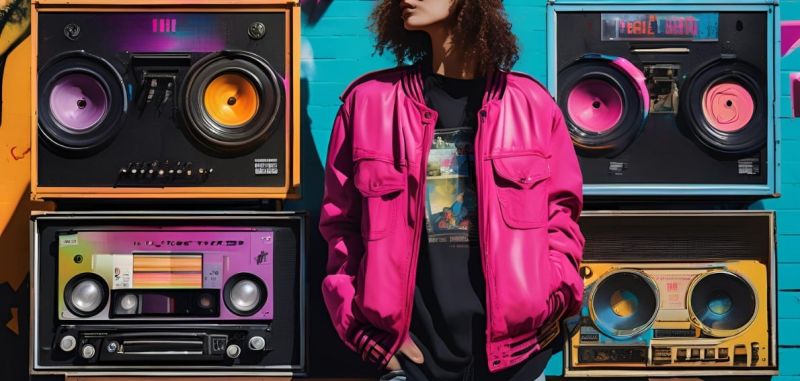
 4th June 2025
4th June 2025